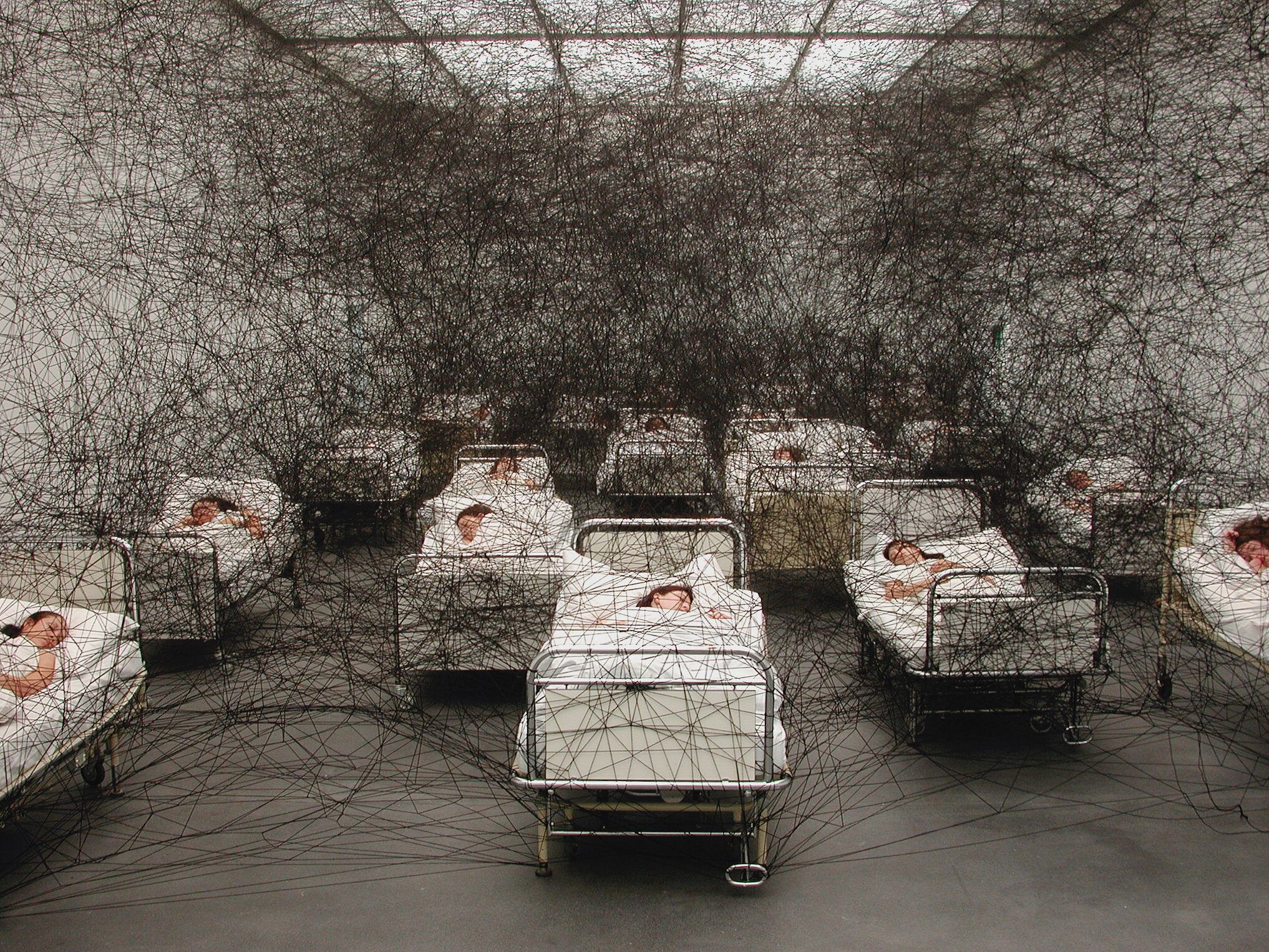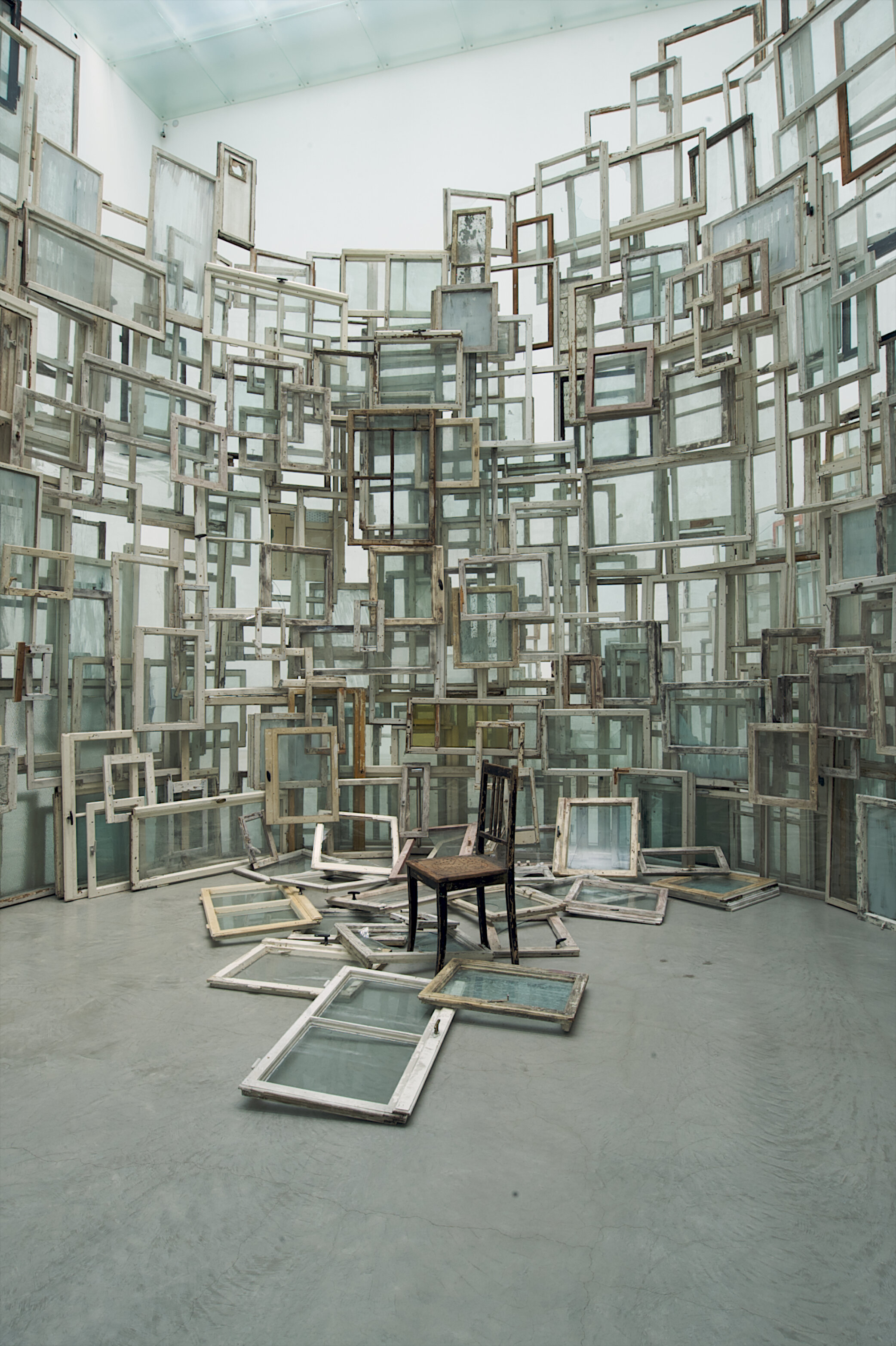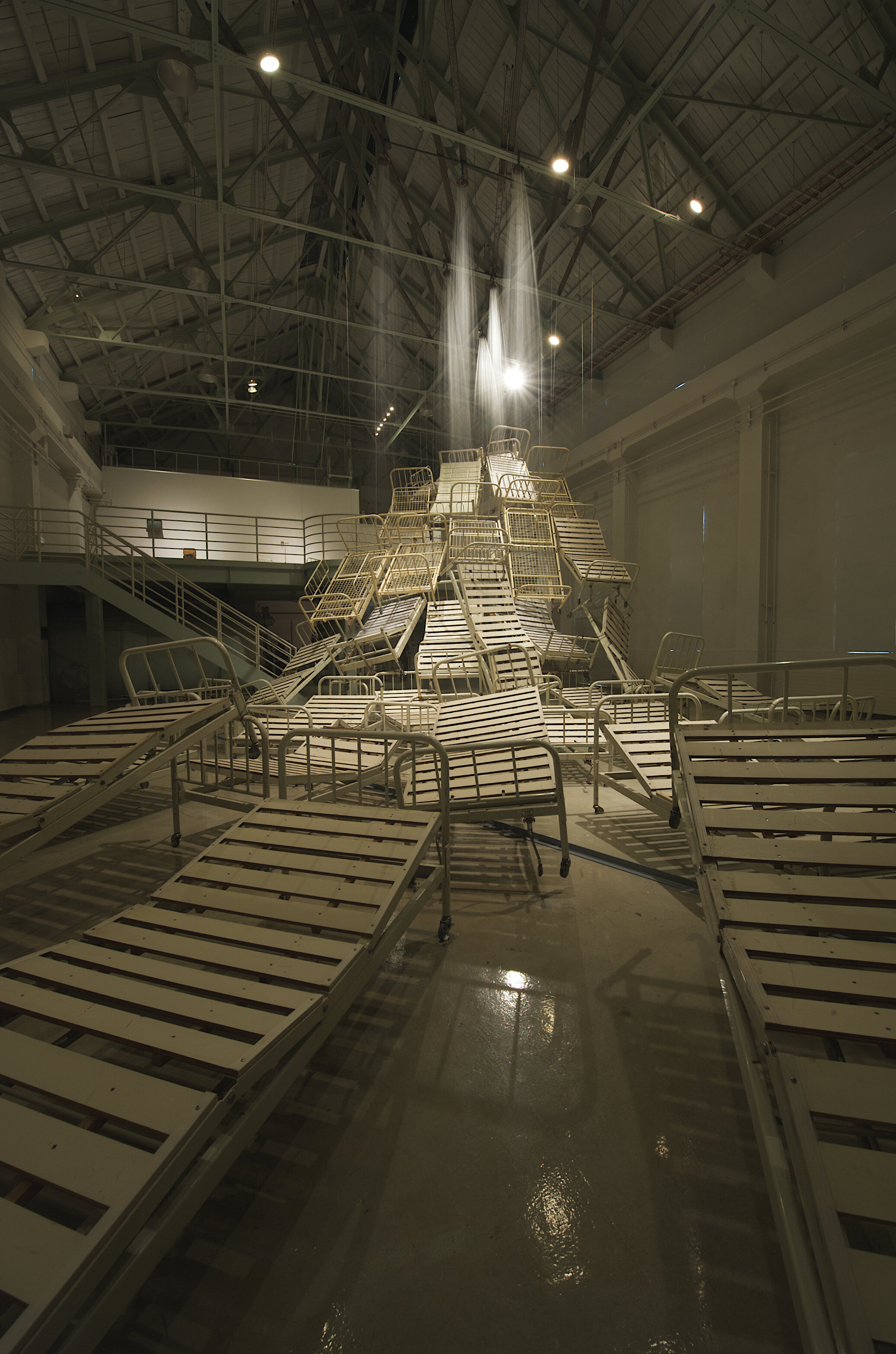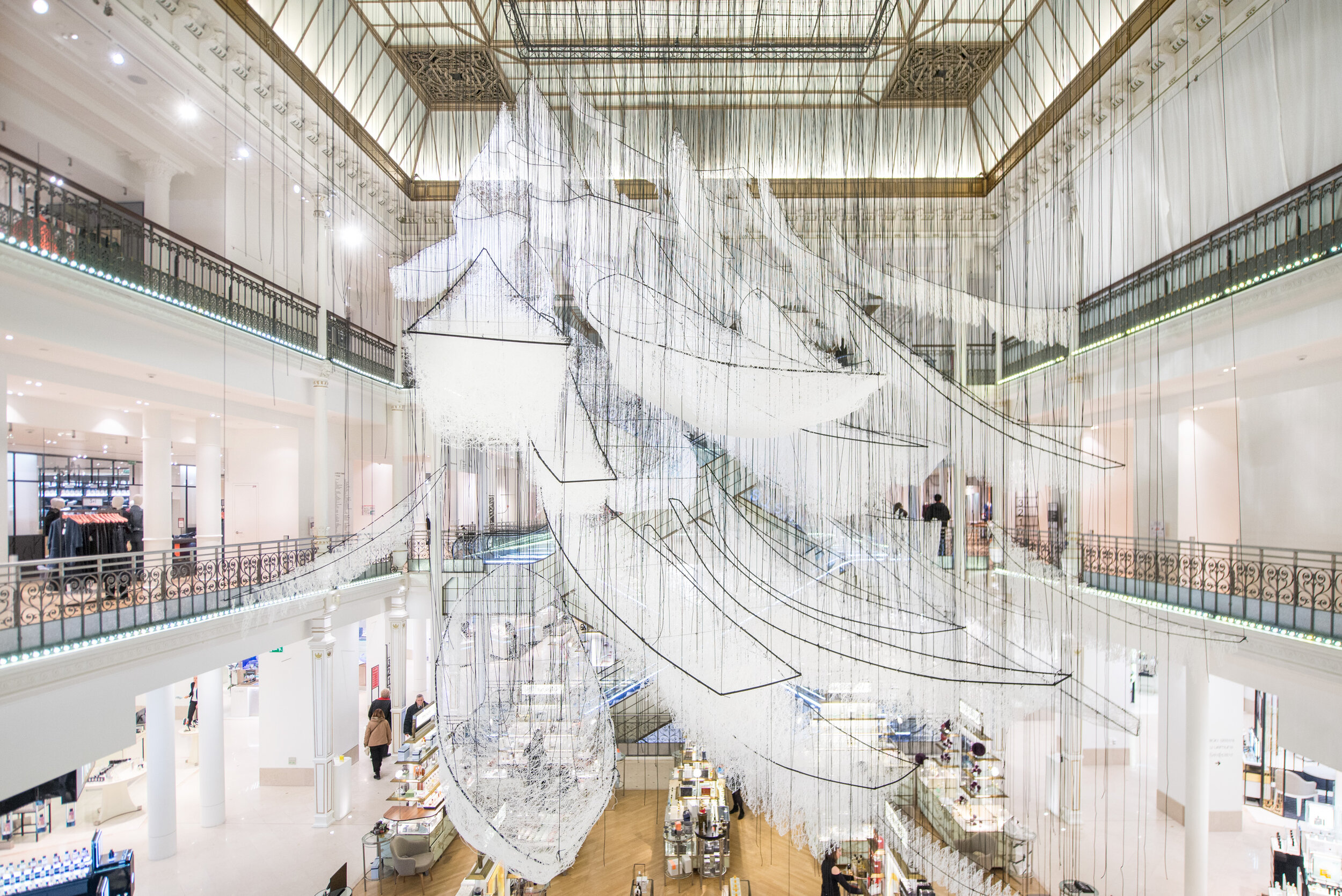Chiharu Shiota
You initially studied to be a painter, but your work today is three-dimensional. You combine performance installation and body art. How did you decide to go in this direction?
I was a painter, but I felt limited to the two-dimensional canvas, then I started working with yarn. Creating the three-dimensional installations is like drawing in the air.
The Locked Room, 2016 I Installation: old keys, old wooden doors, red wool I KAAT Kanagawa Arts Theatre, Yokohama, Japan I Photo by Masanobu Nishino I Copyright VG Bild-Kunst, Bonn, 2021 and the artist
By a 'fortunate mistake,' you ended up studying performance under Marina Abramovic. How did that influence and shape your work?
I did performance art before I joined Marina Abramovic’s course, but through her workshop my work with performance art became deeper. My performance was always in connection with other material as an installation. But Marina was only using the body, or the energy of body. This had a great influence, but I was a bit afraid. I did not want to lose my way. I wanted to return to my installation art not only my body, but I wanted to work with many different materials. But overall, it was a good opportunity.
In another interview, you said that a "string is like a feeling. The String is tight or tangled or cut." It made me think of symphonic music, and how tangled different instruments are, how many different types of sounds and players have to come together to create it. An educated ear can hear more subtleties in the music. How do you suggest viewers approach your work?
I like the viewer just to see my installation at first. The first moment is most important for me – they feel something and then afterwards they want to know the concept. Art has not exactly one answer and everyone can feel free to think about its meaning– of course I have a concept about my work, but it is also ok when the visitors think differently.
After the Dream, 2016 I Installation: dresses, black wool I Toyota Municipal Museum of Art, Aichi, Japan I Photo by Kazuo Fukunaga I Copyright VG Bild-Kunst, Bonn, 2021 and the artist
You were born in Japan, but you've been living in Berlin for a long time. How do those two, very different cultures affect your work?
When I was 24 years old, I left Japan, and now, I have been living in Berlin for 24 years. I have been living half my life there and here. But my way of thinking, is still in the Japanese langue, I think. It is still better after all this time. But my identity is clearer since I left Japan, and every time I travel to a different country, I can see my identity more and more of my self.
Has the global pandemic and lockdowns influenced your work in any way?
When my exhibition “I hope…” at König Galerie, Berlin opened in January, we were still in lock-down in Berlin. I could not open the installation to the public and everyone was saying what a pity it was that nobody can visit. But I didn’t want this installation to be a ‘pity exhibition’, so, I invited performers, musicians, and dancers and organized a unique online experience. Every Saturday, we published a performance on our Facebook and Instagram channels. If Berlin did not have this lockdown, then I would have not organized this event and could not enjoy it.







Photo of Chiharu Shiota by Sunhi Mang, Berlin, 2020 I Copyright VG Bild-Kunst, Bonn, 2021 and the artist
www.chiharu-shiota.com








